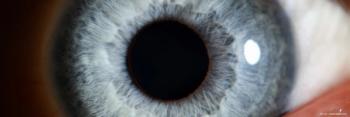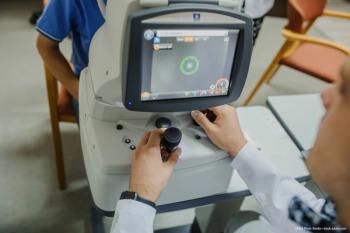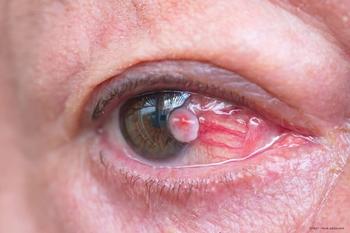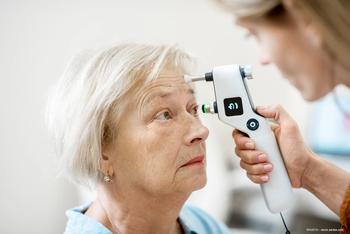
A once-daily oral drug targets inflammatory processes and thus far has been found to be well tolerated in a phase 2 safety trial.

Lynda Charters Enoch started her early “eye life” at the Schepens Eye Research Institute, Boston, which ultimately culminated in her current position as an Editor of Ophthalmology Times.

A once-daily oral drug targets inflammatory processes and thus far has been found to be well tolerated in a phase 2 safety trial.

Investigators search for a link between transient ischemic attacks and changes in the retina.

A study finds acceptable outcomes, vision and microperimetry improvements at higher doses.

The meeting places a special emphasis on pharmacotherapies in the pipeline for the treatment of neovascular exudative diseases of the eye and how they will affect clinical practice and Medicare.

Approach shows potential as a promising second-line screening tool for patients with diabetes.

The improvement became evident during an average time of 6 months.

The investigators believe that, based on their findings, the impact of COVID-19 on the autonomous nervous system warrants further prospective studies and assessment of pupillary function might be a useful test for determining autonomic dysfunction.

Consecutive intravitreal dexamethasone treatments may be beneficial for patients with DME patients who had undergone a previous vitrectomy.

Imaging study revealed specific retinal and choroidal changes associated with the disease.

Investigators have cited the need for pharmacologic and non-pharmacologic interventions to improve the ongoing burden after hospitalization for COVID-19.

The difference in visual acuities based on CST fluctuations in these patients with diabetic macular edema remained significant.

The newly formed Bespoke Gene Therapy Consortium (BGTC) will team up to beat rare diseases that are currently using gene therapy.

A pilot study tests the technology to obtain remote fundus imaging of patients.

Retinal and choroidal changes were observed in study.

Some studies have reported that retinal vascular permeability results in choroidal thickening, while others have reported choroidal thinning or no changes.

Save the dates for this virtual interactive conference featuring top US ophthalmologists.

Patients can get real-time disease monitoring with self-operated device.

The FDA has given its approval to Byooviz (ranibizumab-nuna, SB11, Samsung Bioepis Co Inc and Biogen Inc), a biosimilar referencing Lucentis (ranibizumab, Genentech).

Improvements are seen after gene therapy for Leber congenital amaurosis.

Options facilitate increased durability for patients with retinal degeneration.

According to a team of French investigators, every patient hospitalized with severe COVID-19 cases in their study had retinal and choroidal anomalies on indocyanine green angiography and optical coherence tomography images that were possibly related to the virus.

In a poster presented at the American Academy of Ophthalmology 2021 annual meeting in New Orleans, Mark Wieland, MD, noted that the Port Delivery System with ranibizumab provides drug delivery over an extended period.

During a presentation at the American Academy of Ophthalmology 2021 annual meeting in New Orleans, Veeral Sheth, MD, presented research that found faricimab, a bispecific monoclonal antibody, provided sustained retinal stability in patients with diabetic macular edema (DME) compared with other retinal treatments.

Speaking at the American Academy of Ophthalmology 2021 annual meeting in New Orleans, Ines Lains, MD, PhD, explained that the mechanisms of AMD progression currently remain poorly understood and the tools to predict and halt progression are limited.

In a presentation at the American Academy of Ophthalmology’s 2021 annual meeting in New Orleans, Nathan Hall, BS, MS, pointed out that an epidemiologic analysis of malignant ocular surface tumors found significant differences in geographic prevalence rates in the United States.

During a presentation at the American Academy of Ophthalmology 2021 annual meeting, Denise Freitas, MD, reported that the ocular findings in infants with congenital Zika virus syndrome were similar among the affected infants and occurred frequently. The most prevalent of the findings was optic nerve pallor.

Roger A. Goldberg, MD, MBA, speaking at the American Academy of Ophthalmology 2021 annual meeting in New Orleans, noted that small misalignments in the plunger can lead to possible overdosing.

Felipe Medeiros, MD, in a presentation at the American Academy of Ophthalmology 2021 annual meeting in New Orleans, noted that a phase 3 clinical extension study of the bimatoprost implant found that patients’ IOP was lowered and stayed low with no additional treatment or changes in their visual fields.

Shady Awwad, MD, in a presentation at the American Academy of Ophthalmology’s 2021 annual meeting in New Orleans, pointed out that the application of mitomycin C after corneal crosslinking does not prevent development of corneal haze after the procedure and actually contributes to development of more corneal haze.

tPA treatment could provide benefits for patients with central retinal artery occlusion.